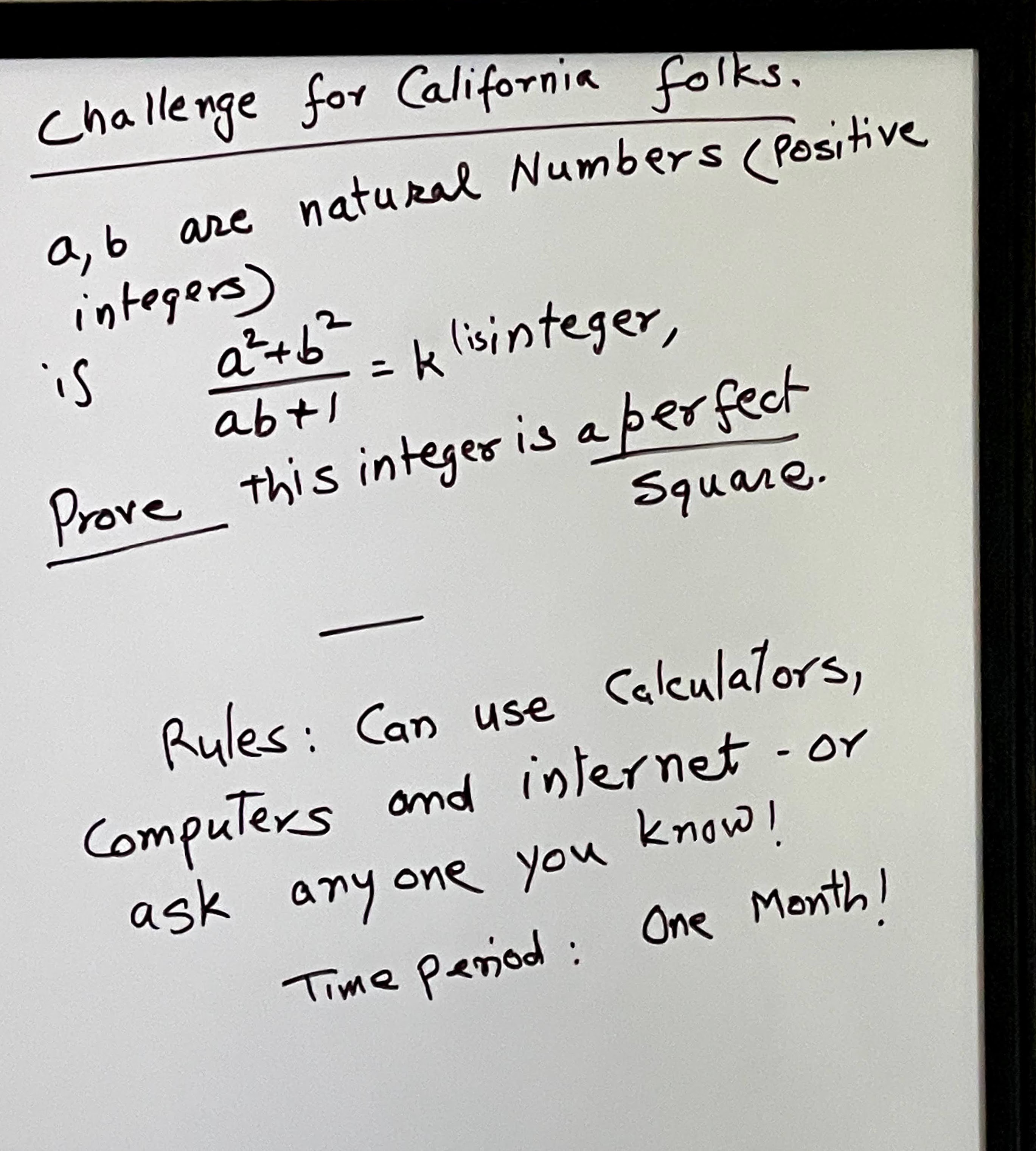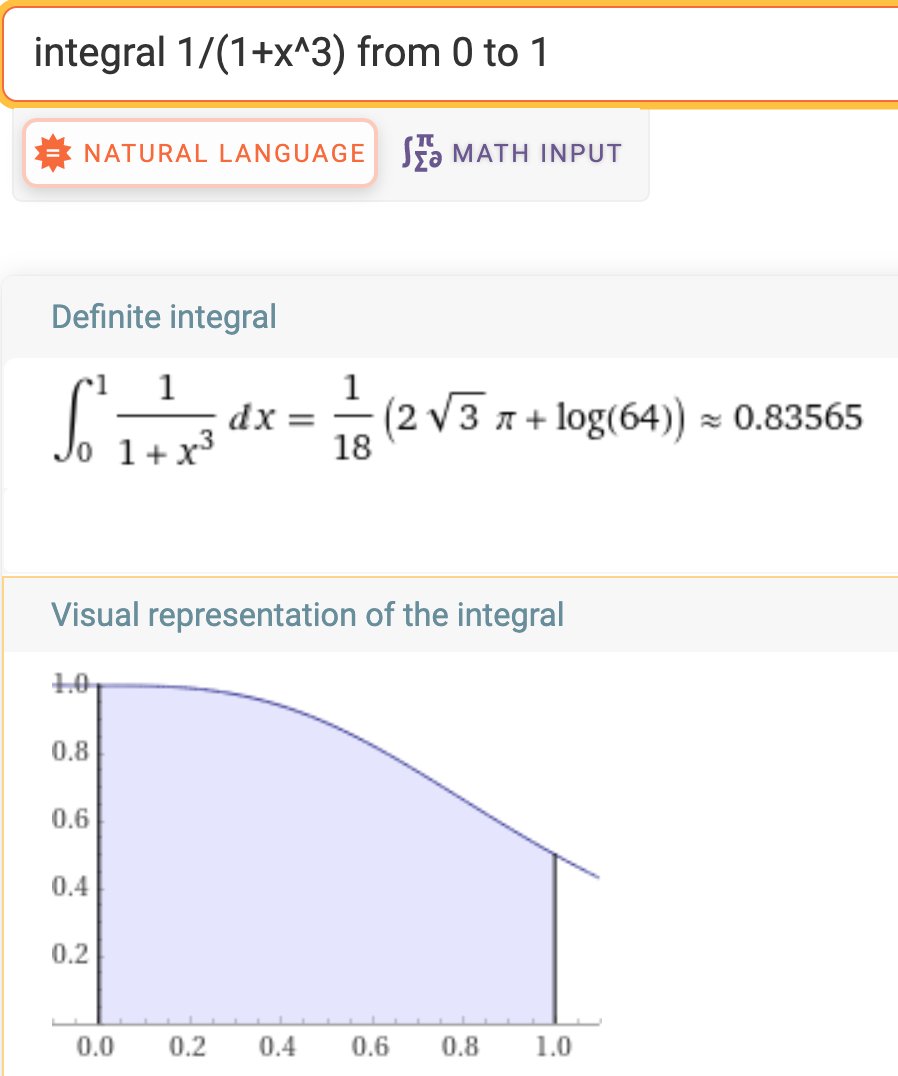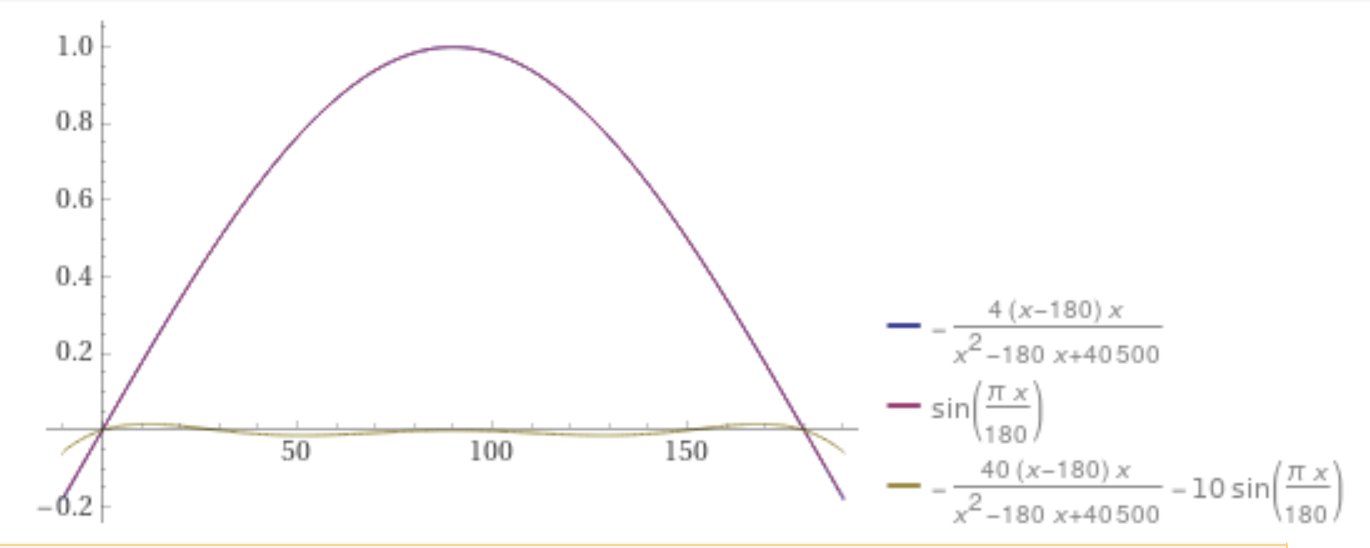Amber G. wrote:.. but a slight modification, as Madha says and used was to use:
arctan(1) = arctan(1/2)+arctan(1/3).. Now if you use, 30 terms of each series, you will get 10-15 places of accuracy...
Now that's ingenious! I'm impressed. I read that Madhava (or his disciples) actually quoted the value of PI to 18 places in one of their works, and I was wondering how many decades of work that represented, calculating it with that slow series. As you say, the modification above will yield a much faster converging series.
But what kind of procedure would allow somebody to identify that atan(1/2) + atan(1/3) was the same as atan(1)? Or, as you say below, 4*atan(1/5)-atan(1/239)?
One of my *first* use of computer (this was way back in 60's with IIT Kanpur's IBM 7044) I got value of pi for a few *hundred* places of decimals - using this well known Madhava's trick..
pi/4 = 4 arctan(1/5) - arctan (1/239)
pi = 16 (1/5 - 1/(3*5^3) + 1/(5*5^5) - 1/(7*5^7) + ....) - 4 (1/239 - 1/(3*239^3)+ ...)
Ingenious again, and definitely very fast-converging, but same question as above - how was this identity determined?
What datatype did you use with that computer? Float only gives 8 places of accuracy, double gives about 16. I'm guessing you implemented some kind of string-based representation of the numbers, with long division to go from one term in the series to the next?
Actually, a question that I had was - is there any practical use to knowing the value of PI to billions of places (I believe that's the current status)? I don't believe it's used in cryptography. If one takes the known radius of the observable universe, and if one wants to calculate the circumference down to the diameter of a hydrogen atom, the number of decimal places of PI that one needs, is - 39! If one now wants to calculate that circumference down to 1 Planck length (I believe this is the limit of discretization of space itself) - the number of digits necessary is - 63. If one instead wants to compute the volume of the known universe down to the volume of every last hydrogen atom, that would need PI down to 117 decimal places.
Is it just an academic exercise, knowing the value of PI to "billions of digits" accuracy?
Also, when people claim that the "Greeks knew the value of PI to great accuracy" - that is such a bare-faced lie. The Greek numbering system was the precursor of the Roman one, so it represented numbers by letters in the same way, except that four would be represented as IIII (or four of the equivalent Greek letter) rather than IV (subtract 1 from 5) in the Roman system. So there is no such thing as "decimal places" in this numbering system. The concept of "decimal places" comes from India, and in fact it is impossible to represent any number (let alone PI) to any number of decimal places using the Greek numbering system.
In fact, the Greek number system doesn't even permit multiplication or division the way we know it, so even 22/7 isn't useful - if one had a circle of radius (say) 11 and a quarter cubits, and one wanted the circumference - doing the multiplication of (11 1/4) by 22, and then the division of that by 7 - well, go ahead and try it with the Roman number system (basically the same as the Greek one).
So far as I can gather, what the Greeks actually had, was a geometrical procedure for approximating the circumference of a circle of known radius. The compass and ruler construction procedures for bisecting angles, generating 60 degree angles, etc. that we learned in school, seem to have come from the Greeks. And they came up with that, because they had no good way to multiply or divide with their numbering system. So what they did was to construct a 60 degree angle, then bisect it a number of times, and do that in such a way that they could approximate the circumference of a circle by a regular polygon with 96 sides. Then they would take the perimeter of that polygon as the length they needed for their architectural projects involving circles.
One can represent the circumference of a circle by regular polygons, and get approximate values for PI that way. For example, as below:
No. of sides--------Approx. value of PI
----------------------Inscribed polygon-----------------Outer polygon--------------------Average
3----------------------2.598076211----------------------5.196152423----------------------3.897114317
4----------------------2.828427125----------------------4------------------------------------3.414213562
5----------------------2.938926261----------------------3.63271264-----------------------3.285819451
6----------------------3------------------------------------3.464101615----------------------3.232050808
10---------------------3.090169944----------------------3.249196962----------------------3.169683453
12---------------------3.105828541----------------------3.215390309----------------------3.160609425
24---------------------3.132628613----------------------3.159659942----------------------3.146144278
48---------------------3.139350203----------------------3.146086215----------------------3.142718209
96---------------------3.141031951----------------------3.1427146-------------------------3.141873275
192--------------------3.141452472----------------------3.14187305-----------------------3.141662761
So even with a regular polygon of 96 or 192 sides, one barely gets a value of PI more accurate than 2 to 4 decimal places, and one might as well go with 22/7.
EDIT:
Seems like even taking the average PI value from the inscribed and the outer polygon doesn't help that much.
END EDIT
So the next time somebody claims that the "Greeks knew the value of PI to great accuracy," one should ask the claimant to write down the value of PI to the claimed accuracy, using the Greek or Roman number system.




